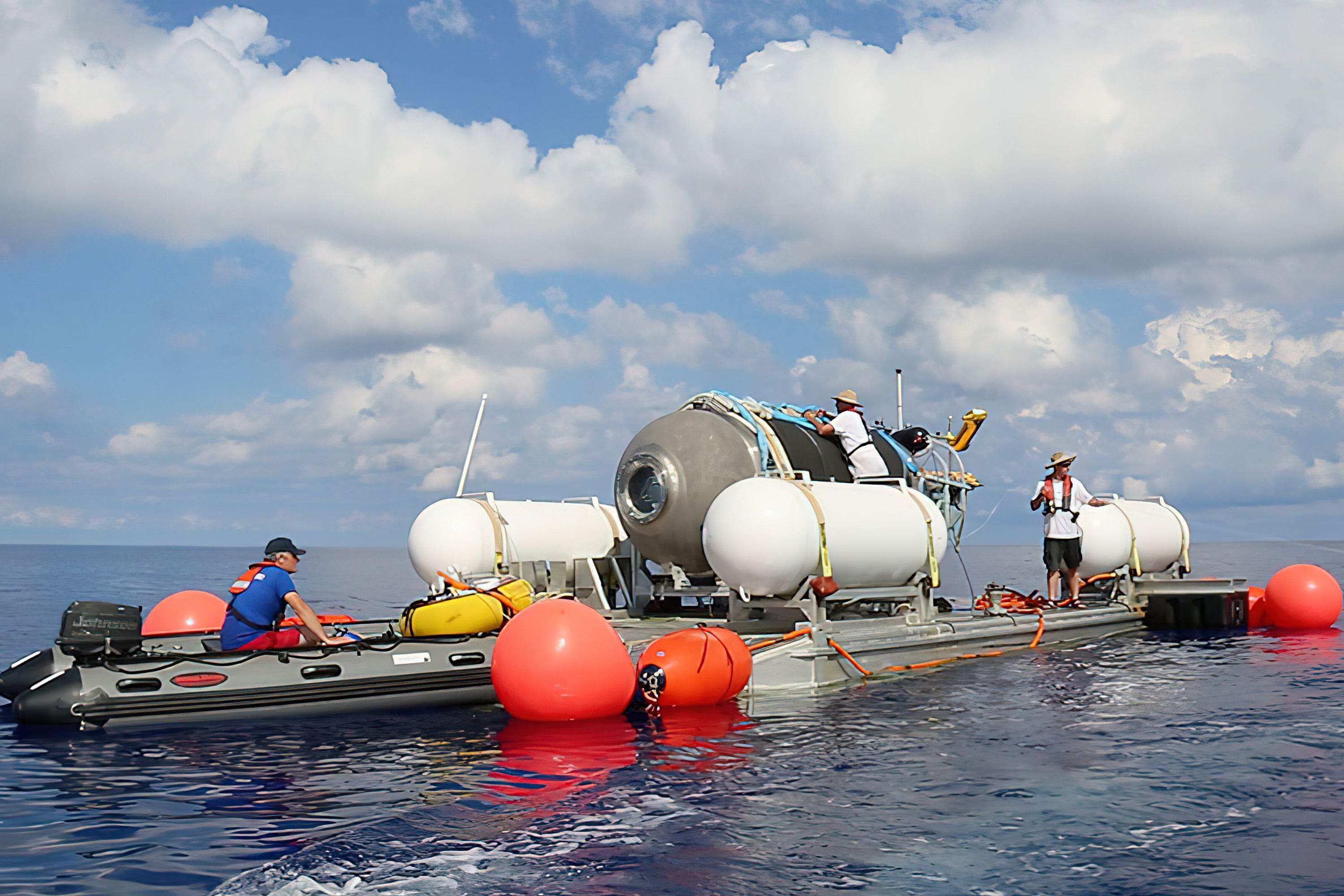Experts explain how to move missing submersible from sea bed
A Q&A panel conceded that the search for the Titan vessel, which went missing during a voyage to the Titanic wreck site, ‘does not look good’.

Experts have explained how the missing submersible would be moved if found at the bottom of the sea, as they cast doubt on the chances of a successful rescue.
A Q&A panel conceded that the search for the Titan vessel, which went missing during a voyage to the Titanic wreck site, is “running out of time” and “doesn’t look good”.
They also questioned the “speculative” source of the underwater noises that have been detected by rescue crafts and predicted that the incident will trigger an investigation into how deep-sea activities are regulated in the future.
It is incredibly difficult to find an object of this sort of size at the bottom of the ocean
The Q&A heard that the Titan will need to be located, brought to the surface if it is on the sea bed and then would need to be unsealed from the outside.
It was indicated surfacing would take around two hours.
Professor Alistair Greig, professor of Marine Engineering at University College London, said: “At the moment they are not physically looking, they are listening for them on the sea bed.
“They haven’t got any vehicles down to the sea bed yet to actually look.”
British Antarctic Survey marine geophysicist Dr Rob Larter said: “It is incredibly difficult to find an object of this sort of size at the bottom of the ocean.
“You are talking about a totally dark environment.
“You are not going to be able to find this with active sonar from a surface ship.
“You’re going to have to have some sort of deep-towed or autonomous vehicle that’s roaming around nearer the sea floor.”
He added that the Victor 6000 remotely operated vehicle (ROV) is, he believes, the “only thing” that is on site with the capability to get down to the sea bed and explore.
Prof Greig said the ROV will not be able to lift the Titan itself and will have to attach “some device” to it.
He speculated that if Titan is trapped under debris then the ROV’s “manipulator arms” may be able to free it for the submersible to then make its own way up.
The US Coast Guard announced on Wednesday that underwater noises had been detected in the search area.
Dr Larter said: “The reports that are available are very sketchy of what the nature of these sounds are.
“There’s nothing about the frequency content of the sounds, there’s some reports that say they have been every half hour on the half hour when they were happening but I’m not sure that’s authoritative.
“So it’s very difficult to infer much because there’s not much information.”
It is clear that from reports I have read that there is a lack of regulation governing what people can put in the water I think
Rescuers have not narrowed down the search site which the experts said would indicate they have not been able to confidently locate where the noises are coming from.
Prof Greig explained the difficulty of tracking the noises, saying sound travels in a “curved path” through water and it is therefore not possible to “just draw a straight line” down from a signal.
Asked if the incident will spell the end of deep sea tourism, Dr Larter said an investigation may prove it to be a “key moment” in thinking about how such activities are regulated in the future.
“It is clear that from reports I have read that there is a lack of regulation governing what people can put in the water I think,” he went on.
The expert gave an example of images that came out after a tourist vessel sank in Antarctic waters 15 years ago showing people taking to open lifeboats and how that resulted in change that meant people would “absolutely” not be allowed to use open lifeboats in that situation now.
Prof Greig highlighted the issue surrounding the “potential customer base” and how the story of the Titan “may put people off wanting to pay to go on these trips”.
Subscribe to Independent Premium to bookmark this article
Want to bookmark your favourite articles and stories to read or reference later? Start your Independent Premium subscription today.
